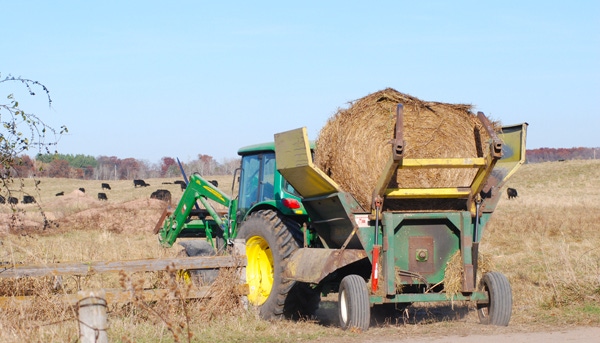The study represents the first national survey of the health, marketing, management, and biosecurity practices of livestock operations with annual sales of agricultural products from $10,000 to $499,999.
March 9, 2012

USDA’s Animal and Plant Health Inspection Service (APHIS) has released a report from its “Small-scale U.S. Livestock Operations, 2011” study. The study represents the first national survey of the health, marketing, management, and biosecurity practices of livestock operations with annual sales of agricultural products from $10,000 to $499,999.
For details on the cow-calf segment of the study, click here.
Conducted by USDA’s National Animal Health Monitoring System (NAHMS), the “Small-scale U.S. Livestock Operations, 2011” study provides statistically valid information on the characteristics of these operations and provides a better understanding of the challenges and barriers they face. The report contains information collected from 8,123 small-scale livestock operations in all 50 States that had cattle, horses, swine, sheep, goats, poultry, aquaculture species, and/or other livestock species. Here are a few highlights from the report:
Overall, 9 of 10 operations (87.2%) had beef cattle in the previous 12 months; 37.7% of operations had horses or other equine species, and 16.9% had chickens or other poultry.
Almost half of operations (47.1%) kept more than one type of livestock species during the previous 12 months.
About 7 of 10 operations (720%) raised at least one plant crop during the previous 12 months.
On almost 4 of 10 operations (37.1%) the primary operator was 65 years of age or older.
Of operations that brought on new animals or had animals leave and return during the previous 12 months, 40.3% always quarantined the new or returning animals, 11.7% sometimes quarantined them, and 48% rarely or never quarantined them.
Overall, 92.1% of operations would be somewhat or very likely to directly contact a private veterinarian if they had an animal suspected of having a foreign animal disease, and 40.9% would be somewhat or very likely to directly contact the USDA.
About 1 of 4 operations (24.5%) marketed or advertised agricultural products as pasture-raised livestock; 13.5% marketed products as naturally raised livestock; 5.5% marketed or advertised products as promoting conservation (eco-friendly); and 1% of operations marketed USDA certified organic products.
When asked about training that would be useful to the operator and the farm business, operators on over two-thirds of operations felt that additional training in animal health/diseases, infectious disease management practices, how to transfer the farm to the next generation, tax-related issues, or government programs and regulations would be somewhat or very useful to the farm business.
The Small-scale U.S. Livestock Operations, 2011 report is available at the NAHMS website.
You May Also Like



